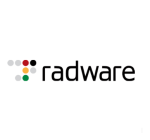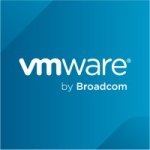
A10 Networks Thunder ADC Valuable Features
SD
Sebastien Deboulet
Talent Acquisition Partner at Worldline Global
A10 Networks Thunder ADC is an easy-to-use and flexible solution.
View full review »It's very simple to use.
View full review »Feature-wise, A10 Networks Thunder ADC is better for troubleshooting. I like the solution's command line to troubleshoot the issues, especially compared to other vendors. So in comparison with the others, it's much easier to troubleshoot.
View full review »Buyer's Guide
A10 Networks Thunder ADC
October 2025
Learn what your peers think about A10 Networks Thunder ADC. Get advice and tips from experienced pros sharing their opinions. Updated: October 2025.
869,883 professionals have used our research since 2012.
Compared to F5, which I used about six years ago, the A10 is much easier when routing. You don't have to use the wildcard bits to route it between the different segments. It's much less troublesome to configure.
A10 Networks also doesn't have separate licenses for some features. All licenses are already onboard, which is not the case with F5. It's called the GTM on F5 and on A10 it's GSLB. The DNS load balancing is globally based and that isn't a separate license. That's already on the box in the ADC license itself.
The solution's traffic flow management capabilities are quite easy to use and quite good, and our ability to troubleshoot traffic flow issues is good if you know how to read the packet captures. If you know your way around the command prompt, it's fine.
We've got the solution's support for expanding infrastructure to public, private, and hybrid cloud containers for our internal data center, and we're also balancing some things we've got in AWS. That's only available internally. That scales well, especially the virtualization with the A10s. You can split it up into 32 separate units.
The solution's support for our on-premise applications is good. It's very flexible. You can split it up into different Layer 3 partitions: internal- or external-facing. Or you can use it as a separate partition for testing.
View full review »The DNS application firewall and load balancing are very valuable.
View full review »DC
reviewer445593v
User at a government with 501-1,000 employees
One of the features that we really like is the services map, which is a way that we map traffic from the front-end virtual server to the back-end servers.
Another feature we like is application switching. I'm using this as a template.
A lot of our SSL management is done on the front-end side, so there is one pane of glass for a lot of our security certificates. It gives us visibility. It also falls under when certificates are going to expire. Even for servers that are coming down, we can see how that affects the traffic flow by using the services map.
Each release of the code is becoming more polished, not that I find it difficult today. I'm glad to see the features and enhancements we request are making it into every release. It is very simple to use.
View full review »PD
PrateekDeem
Business Partner at Sparrow Networks
The customers are using all the features. It's got a good set of features.
It is a stable solution.
The product is easy to set up.
It's scalable.
Technical support has been helpful.
View full review »NC
Nuwan Chathuranga
Team Lead - Network and Security at Connex Information Technologies
The most valuable features in A10 Networks Thunder ADC are the ease of configuration, user-friendliness, and simplicity to sell to customers.
View full review »MQ
Muhammad_Qureshi
Network Consultant at a aerospace/defense firm with 5,001-10,000 employees
The solution is user-friendly and the CLA troubleshooting is easier compared to other solutions.
View full review »The most valuable parts of this product have to do with the efficiency of deployments and data security.
View full review »We use the monitoring features and security features. The solution will tell us if someone tries to use the wrong password or to hack into the system. We do have firewalls in place so no incoming traffic from the outside can get in. Our firewall blocks everything coming in from the outside, but we can go out to our network.
We use the diagnostics to debug files and, when there is a problem, we can generate a file that we can send to our NOC engineers so they can take a look at it.
We also use the login resource usage which gives us a summary and graphs of services — when things are going down and are up.
The ADCs are pretty straightforward and easy to use. There is a GUI base where you can go in and see everything, but they also have a CLI base where you can use a command and get the information that you want, very fast. You log into the website with the A10 GUI and you can see all of your functions and your health monitor, which is very important. With the health monitor you can see the health of the switch and, if something is going on, how it's progressing. Also upgrading the GUI is very easy. It's user-friendly.
The traffic management is very good. I can monitor the traffic that comes into the A10 very easily. We balance traffic between the active blade and the standby blade. The traffic management is holding its load properly and its balancing properly. It's very good.
In terms of the traffic flow management capabilities, there are graphs that you can look at as you enable them. You can look back at live data for the last 30 minutes and it's very good. I like it. You can manage your traffic easily and you can troubleshoot because, if you look back at your data for the past two weeks, you can see if something was flipping. It's a good feature.
View full review »HR
Himanshu Rastogi
IT Head at Medi Assist
I use SSL, TSL, and additional offloading. With additional offloading, this is where I can put my certificate on A10, as servers don't have the capability.
It has allowed us to smooth out our traffic.
View full review »AM
Amita Mahajan
Network Analyst at Alamo Colleges
The features we have used are basically for load balancing. The round-robin feature, the persistent cookies, the source IPs, source mapping, we use all of that in our situation.
They also have a feature I use frequently. We have two appliances and I'm able to move my application from one appliance to another. I don't have to move my whole A10 to be active on the other side or to be passive on the other side. If an application is having a problem, I can just move it using a command. That is really interesting and very appropriate for our environment.
It's very easy to use. The commands are easy to use. I have used a couple of other load balancers and I find A10 to be the easiest one. The language and the commands are easier, as is the layout. Even the technology behind it all just links together, so it's pretty easy to use. You just follow the steps and you're good.
Within load balancing, we use some of the security features as well, such as the source mapping. We make sure that everything goes in and out from A10 itself. That makes the messages more secure too. We know what's going in and what's going out. It captures their source IP addresses if we want it to. The VRRP solution is also good. It has automatic failover.
It also has a Virtual Chassis System, although we don't use it. But we do have the option of creating virtual chassis, so that gives it a bit more security. If we find an application which is not going to play well in the main pool, we can easily create a virtual chassis and have that application in that virtual chassis. With the virtual chassis we can also create system partitions and have a test system for test applications and have the others elsewhere.
View full review »The Global Server Load Balancing (GSLB) is simple to use.
View full review »SS
Shiven Singh
Network Manager at a university with 1,001-5,000 employees
We send all of our production web traffic through our A10. We have a major website, which is our school's website. On the website, there are many different applications and sites, so being able to balance that between our on-premise resources as well as our public cloud with AWS is a huge feature.
The solution's security features are excellent. It actively helped us mitigate a DDoS attack in October of 2018. You can do SSL offloading. You can use the A10 to terminate your SSL connectivity, meaning that you can install all your public certificates on the A10 box itself. It just has a wealth of security features.
Being a public entity and having a public website, which is highly visible with a lot of traffic, we are a target for DDoS. Within the last year, we have had a couple of DDoS attacks which could have affected our web traffic and taken down certain parts of our website. This did not happen because the A10 was able to mitigate the attacks using rate limiting that can be configured for DDoS mitigation on the box.
The single pane of glass traffic management is a nice feature. It allows us to be able to delegate access to different groups of people. This means that I can provide a front line support (a help desk) a certain level of access to be able to look at things, a second level support a little more access, and then engineers can have full access. It is very useful to have a simple dashboard where you can login and look into what your traffic patterns are, then look and see what times of day you're experiencing the heaviest traffic. You can quickly identify if you are possibly having a security issue or security breach. It makes it very easy to use the box.
Troubleshooting traffic flows is fairly easy on the box, as you can do packet captures or tcpdumps directly on the A10 itself. So, you can do a trace and see what the A10 is doing with certain traffic. E.g., if I have a client somewhere out in the world who is coming into my A10 box and reporting some weird behavior, or saying, "Hey, I can't get to this application on your website," or "I'm getting blocked for this reason. I can't look at the A10 and figure it out." I could then go into the traffic flows, run a tcpdump, and do a traffic capture. At this point, I can immediately identify where the traffic is coming from and why it is not getting through the box.
I have a very technical background and was a network engineer for many years before I became a manager. For me, it is a very easy to use product. The web GUI makes it very easy to configure. The CLI is not very difficult to use, along with the syntax. The command line is very easy to learn.
View full review »The solution is flexible.
View full review »NC
Nuwan Chathuranga
Team Lead - Network and Security at Connex Information Technologies
It's a very friendly solution, easy to configure, and it's very flexible.
View full review »The SLB and GSLB load balancing are the most valuable features. They meet our need to do server-side load balancing and global site load balancing so we can distribute traffic, not only intra-data center, but inter-data center.
We are using them in the cloud and they are flexible, supporting the cloud services that we use. We use Azure.
View full review »We don't use many of the features. We're just using the basic ADC features. We're not really using anything particularly extensive on them. They sit and work most of the time.
The ease of use is very good. It's very robust. It just sits and works. We forget that it's there a lot of the time.
The load balancing, proxies, and internal proxies are valuable features.
View full review »The Deterministic CGNAT feature.
View full review »
One of the main advantages of A10’s line of ADCs is that they offer an all-inclusive licensing scheme for their products. This scheme enables enterprises to save significantly on costs, and makes managing licenses easier. A10’s ADCs is a solid, high-performance platform. It supports advanced traffic management and scripting features and broad set of security features using a third-party web application firewall. Lastly, A10’s ADCs have IPv6 support which gives it an edge over other offerings in the market should IPv6 functionality be required.
View full review »
Buyer's Guide
A10 Networks Thunder ADC
October 2025
Learn what your peers think about A10 Networks Thunder ADC. Get advice and tips from experienced pros sharing their opinions. Updated: October 2025.
869,883 professionals have used our research since 2012.

















